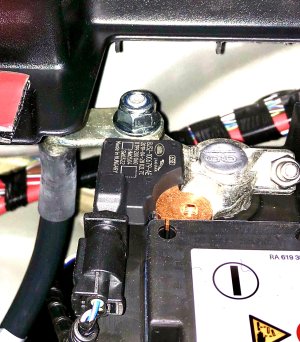The battery on my MY16 Coupe is completely flat and I have to open the driver’s door using the emergency key. This means I can open the bonnet and get to the charging points but cannot open the boot to get at the battery.
Does anyone know if it is possible (or advisable) to recharge a flat battery from the charging points using a Ctek mxs 5.0. The Ctek manual shows the charger being connected directly to the battery.
My thinking is it would be better to recharge the battery properly rather than try and jump start the car and then leave it running or go for a long drive ( not recommended at the moment).
Any advice would be greatly appreciated.
Regards
Does anyone know if it is possible (or advisable) to recharge a flat battery from the charging points using a Ctek mxs 5.0. The Ctek manual shows the charger being connected directly to the battery.
My thinking is it would be better to recharge the battery properly rather than try and jump start the car and then leave it running or go for a long drive ( not recommended at the moment).
Any advice would be greatly appreciated.
Regards

